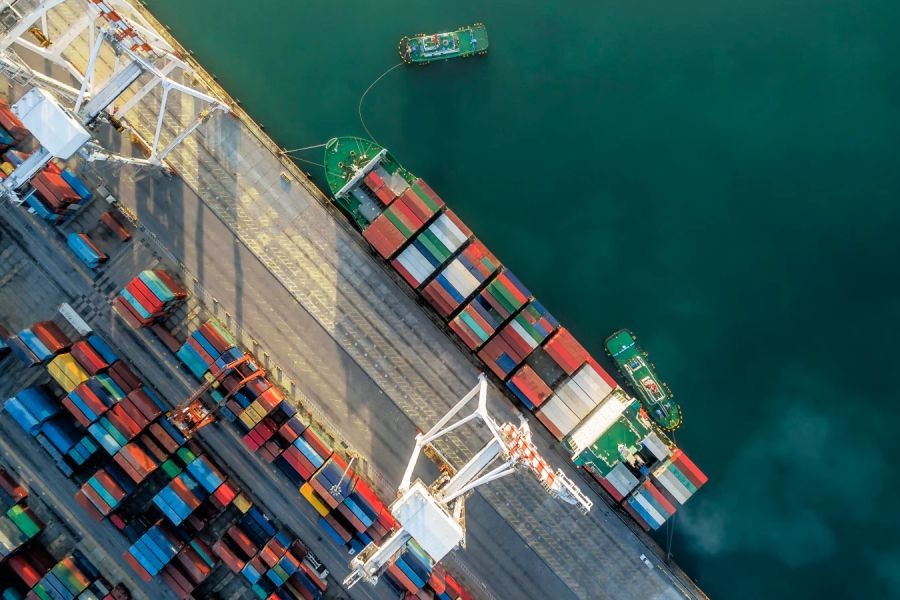In the ever-evolving landscape of global trade, New Zealand businesses have a unique position that offers both opportunities and challenges. Despite its geographical isolation, New Zealand's strategic trade partnerships and robust export sectors have carved a niche in the global market. As Kiwi entrepreneurs and analysts seek ways to leverage this position, understanding the dynamics of New Zealand's trade relationships becomes crucial. With insights from Stats NZ indicating a record $6 billion trade surplus in 2023, it’s clear that harnessing these opportunities can lead to substantial business growth.
Understanding New Zealand's Trade Landscape
New Zealand's economy is heavily reliant on its trade relationships, with exports accounting for around 30% of its GDP. The country's key trading partners include China, Australia, the United States, and the European Union. In recent years, China has emerged as New Zealand's largest export market, particularly for products such as dairy, meat, and logs. According to the Ministry of Business, Innovation and Employment (MBIE), exports to China alone accounted for 29% of New Zealand's total exports in 2022.
This trade relationship is underpinned by the New Zealand–China Free Trade Agreement, which has been instrumental in reducing tariffs and fostering economic ties. For businesses, this means a gateway to an expansive consumer base eager for high-quality Kiwi products.
Case Study: Fonterra’s Success in China
Problem: Fonterra, New Zealand's largest dairy company, faced the challenge of penetrating the highly competitive Chinese market.
Action: Fonterra leveraged its reputation for quality and safety by collaborating with local Chinese companies and utilizing e-commerce platforms like Alibaba’s Tmall. This strategic partnership allowed Fonterra to tailor its products to Chinese consumer preferences.
Result: Within a year, Fonterra increased its market share by 15% and reported a 30% growth in sales. The company's success underscores the importance of adapting to local markets and leveraging digital platforms.
Takeaway: For New Zealand businesses, the key lesson is the importance of strategic partnerships and digital presence in expanding into international markets.
Pros and Cons of New Zealand's Trade Position
Pros:
- Strategic Free Trade Agreements: These agreements reduce barriers and enhance market access.
- High-Quality Exports: New Zealand is renowned for its premium agricultural products.
- Innovation and Sustainability: Kiwi businesses are leaders in sustainable and innovative practices.
Cons:
- Geographical Isolation: Higher shipping costs and longer delivery times can be challenging.
- Market Dependence: Heavy reliance on a few key markets can be risky.
- Regulatory Challenges: Navigating different regulatory environments can be complex.
Debunking Common Myths
Myth: "New Zealand's isolation hinders its global trade capabilities." Reality: Despite its remote location, New Zealand's advanced logistics and transport infrastructure facilitate efficient global trade, as demonstrated by a 2023 World Bank report ranking it 7th globally for logistics performance.
Myth: "New Zealand businesses can’t compete in large markets like China." Reality: Companies like Fonterra have shown that with the right strategy and partnerships, Kiwi businesses can thrive in competitive markets.
Future Trends and Predictions
Looking ahead, digital trade is poised to play a critical role in New Zealand’s global trade strategy. As global e-commerce is expected to grow by 50% over the next five years, according to a report by Deloitte, New Zealand businesses can leverage technology to reach new markets and streamline operations. Additionally, sustainability will continue to be a significant factor, with consumers globally demanding more environmentally friendly products.
Conclusion and Call to Action
New Zealand’s position in global trade offers immense opportunities for businesses willing to innovate and adapt. By understanding the dynamics of international markets, leveraging free trade agreements, and focusing on digital and sustainable practices, Kiwi businesses can not only survive but thrive. For entrepreneurs and analysts in New Zealand, the call to action is clear: embrace change, invest in digital transformation, and forge strategic partnerships to unlock new growth avenues.
What strategies will you employ to leverage New Zealand's trade position? Share your thoughts and join the conversation below!
People Also Ask (FAQ)
- How does New Zealand’s trade position impact local businesses? New Zealand's trade agreements open up international markets, offering opportunities for local businesses to expand their reach and increase revenue through exports.
- What are the biggest misconceptions about New Zealand’s trade? One common myth is that New Zealand's geographical isolation is a significant barrier. However, strategic logistics and international partnerships have effectively mitigated these challenges.
- What future trends should New Zealand businesses watch in global trade? Digital trade and sustainability are key trends, with a focus on leveraging technology and meeting consumer demand for environmentally friendly products.
Related Search Queries
- New Zealand trade partners 2023
- Fonterra success in China
- Impact of free trade agreements in NZ
- New Zealand export statistics 2023
- Digital trade trends in New Zealand
- Sustainability in New Zealand exports
- Challenges of New Zealand’s geographical isolation
- New Zealand-China trade relationship
- Future of global trade for NZ businesses
- Innovative export strategies in New Zealand
































NapoleonLa
6 months ago